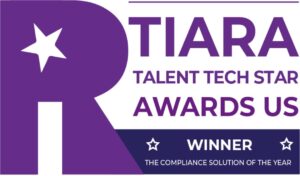According to the World Health Organization (WHO), burnout emerges from “chronic workplace stress that has not been successfully managed.” While the issue of HR employee burnout has been prevalent for a long time, it was the rise of the pandemic that brought it to the limelight.
A lengthy list of factors come together to trigger burnout in HR departments. With remote work culture now becoming a permanent trend – maintaining compliance with employment laws within a workforce scattered across the globe tops this list. In addition, factors such as – the repercussions of the Great Resignation, the increasing need to compete for the best talent, the ripple effects of COVID-19, and the lack of correct support these professionals need – have brought an extraordinary amount of pressure on HR employees.
But how exactly do these factors drive HR professionals to burnout? What can companies do to avoid it? Read on to understand.
1. Aftereffects of the “Great Resignation”
In the spring of 2021, a new phenomenon swept across the U.S. job market. Amid an escalating labor demand and shrinking unemployment, a massive tide of workers chose to quit their jobs. The ripple effect left employers struggling to fill in those blank positions. While many believe the effects of the Great Resignation unfolded in 2021, evidence suggests the process had already begun before the pandemic had set in.
By the year 2019, for instance, there was an almost a 10-fold increase in the job-hopping rate. This meant companies were already pouring heavy resources into constructing, demolishing, and re-constructing their workforces before hitting the ultimate crescendo with the Great Resignation.
The repercussions of this phenomenon, however, lead companies to a valuable realization – that there is a massive lack of talent out there. Such a scenario offered companies two roads to take: either compete for talented employees or infuse talent within the workforce by training current employees.
Not surprisingly, many chose the latter and much of the spotlight automatically shifted to employee retention. The result? There were several structural alterations in the way HR departments operated, triggering a massive, collective HR employee burnout. Fast-forward to 2022 – HR employees are struggling with this problem.
2. The Remote Work Conundrum
When the Pandemic rained heavily across the globe, there was a sharp shift to a remote or (in some cases) hybrid work culture. Most teams were not exactly “ready” for this sudden and unexpected change.
From an administrative vantage point, it became a challenge to manage people living in different states with varying employment and tax laws. From the cultural vantage point, it becomes a challenge to engage employees from different locations and backgrounds who had different perspectives. As of today, a massive chunk of global companies has made remote or hybrid work environments permanent. This only means increasing challenges for HR professionals.
It’s incredible how most companies today have taken massive steps to navigate a remote and hybrid work culture. Compared to the early days of the pandemic, companies today are in a far better position to support their employees and ensure a smoother work performance.
But that doesn’t mean the process has become any easier. In fact, as of today, HR teams continue to site hiring (33%), handling employee training (34%), and the onboarding process (41%) as three of their largest remote or hybrid work-related challenges.
Companies have designed several policies and incorporated many tools and technologies to ensure high employee productivity. But naturally, several challenges related to company culture, engagement, compliance, and belonging continue to persist. These concerns will likely linger for a long time until companies finally find success with remote and hybrid work cultures.
3. Overwhelming Pressure to Attract Talent
In a job market where employees continue to quit at an alarming rate, HR professionals are often tasked with engaging in “talent wars” to bring the best employees on board.
This puts overwhelming pressure on HR professionals to ensure their company offers the “best” benefits to attract the best talent. These benefits include a flexible work environment, competitive pay, and plenty of health support.
Most HR leaders agree that great mental health benefits are crucial tools to recruit and retain employees. According to the Paychex survey, about 96% of HR leaders consider employee mental health to be the responsibility of the employer.
Now more than ever, companies need to tap into the mental health benefits they offer. HR teams must ensure all employees reap the benefits of these mental health resources for maximum productivity and employee retention.
4. Lack of Support
A growing mountain of challenges, these past few years, has made HR teams across the globe feel like they’re at the end of their rope – especially due to issues like an overwhelming amount of projects and challenges associated with understaffing.
While these professionals work hard to ensure employee well-being, they often tend to neglect their well-being along the way. For instance, an HR professional might take all the necessary steps to ensure employees take advantage of the mental health benefits provided by the company but might fail to make use of these very programs for themselves.
In addition, most companies fail to factor the well-being of the HR department into the equation. When burnouts plague the HR teams, employee recruitment and retention take a hit. If neglected long enough, the challenges continue to pile up and the overall performance of the company stoops. This is why organizations must offer ample resources and support to HR professionals.
5. Compliance Issues Due to Remote Work
According to a report, about 70% of the HR leaders said the pandemic made way for the most difficult years of their career and 98% said COVID-19 had entirely transformed their role.
The ripples created by the COVID-19 pandemic demanded companies and HR teams to act swiftly to keep the business afloat and ensure the safety of employees. The arduous process brought out several permanent transformations. One of them was the compliance mechanism for employment and labor laws which was initially designed for an in-office work environment.
With the rise of covid-19 and remote work, companies across the world had to re-think their compliance system – pretty much from scratch. Employment laws including benefits, payroll, harassment, taxation, and wage and hour vary for different states. This made it extremely challenging for HR teams to track, implement, monitor, and maintain consistent compliance with these laws.
Unfortunately, most HR teams continue to struggle with compliance issues. This is mainly due to the lack of the right tools and technology that can handle such a vast diversity and ultimately lead to burnout.
How Companies Can Support their HR Team
The HR team often operates on the frontline of the company. HR employee burnout can leave a long-term negative impact on the company. Fortunately, a few small steps can help bring the HR department on track. These include:
Asking What Your HR Team Needs
The best way to support your HR department is to simply ask what they need. Conduct surveys or hold focus groups to dissect the issues they are facing and the kind of support you can extend to avoid burnout. For instance, if you find that your HR team is understaffed, put in the effort to expand it.
Boundaries are Critical
HR teams, especially the ones who work remotely, deal with burnout the most. For those who work remotely, the line between home and work often gets blurred. To ensure the well-being of your remote HR employees, it’s critical to set boundaries around the amount of time they put into the work.
Using the Right Tools Makes All the Difference
Remember, burnout can be avoided with the right tools and resources. If neglected, however, it can cause irreparable damages down the line – especially as far as compliance with employment and labor laws is concerned. For any HR professional, micromanaging a complex set of varying state laws ends up consuming a lot of time, energy, and resources.
This is where the need for VirgilHR’s SaaS solution – which enables HR professionals to remain compliant with labor and employment laws – comes in. It enables HR teams to deliver against HR compliance effortlessly and in an organized manner. The result? The risks and liability associated with employment and labor laws come to a minimum regardless of how complex the workforce becomes.
If you want to take a massive burden off your HR department’s back so they can shift their focus towards more important strategic objectives in the company, you can reach out to VirgilHR now!






